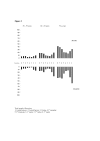Clinical and socio-behavioral correlates of tooth loss: a study of older adults in Tanzania
- PMID: 16536880
- PMCID: PMC1471779
- DOI: 10.1186/1472-6831-6-5
Clinical and socio-behavioral correlates of tooth loss: a study of older adults in Tanzania
Abstract
Background: Focusing 50 year olds and above, this study assessed the frequency, extent and correlates of tooth loss due to various reasons. Frequency and correlates of posterior occluding support was also investigated.
Method: A cross-sectional household survey was conducted in Pwani region and in Dar es Salaam in 2004/2005. One thousand and thirty-one subjects, mean age 62.9 years participated in a clinical examination and completed interviews.
Results: The prevalence of tooth loss due to any reason was 83.5%, due to caries 63.4% and due to other reasons than caries, 32.5%. A total of 74.9% had reduced number of posterior occluding units. Compared to subjects having less than 5 teeth lost due to caries, those with 5 or more lost teeth were more likely to be females, having decayed teeth, confirming dental attendance and to be among the least poor residents. Compared to subjects who had lost less than 5 teeth due to reasons other than caries, those who had lost 5 or more teeth were more likely to be of higher age, having mobile teeth, being males, being very poor and to disconfirm dental attendance when having problems. Predictors of prevalence of tooth loss (1 or more lost tooth) due to various reasons and reduced number of occluding units followed similar patterns of relationships.
Conclusion: The results are consistent with prevalence and extent of tooth loss due to caries and due to reasons other than caries being differently related to disease- and socio- behavioral risk indicators. Caries was the principle cause of tooth loss and molar teeth were the teeth most commonly lost.
Figures
Similar articles
-
Relative contribution of caries and periodontal disease in adult tooth loss among patients reporting to the Institute of Dental Sciences, Belgaum, India.Gerodontology. 2009 Sep;26(3):214-8. doi: 10.1111/j.1741-2358.2008.00236.x. Epub 2008 Nov 14. Gerodontology. 2009. PMID: 19018874
-
Impact of tooth loss related to number and position on oral health quality of life among adults.Health Qual Life Outcomes. 2014 Nov 30;12:165. doi: 10.1186/s12955-014-0165-5. Health Qual Life Outcomes. 2014. PMID: 25433483 Free PMC article.
-
Incidence of tooth loss and dental caries in 60-, 70- and 80-year-old Swedish individuals.Community Dent Oral Epidemiol. 1997 Apr;25(2):137-42. doi: 10.1111/j.1600-0528.1997.tb00911.x. Community Dent Oral Epidemiol. 1997. PMID: 9181287
-
Tooth and surface patterns of dental caries in 12-year-old urban children in East Africa.Community Dent Oral Epidemiol. 1986 Apr;14(2):99-103. doi: 10.1111/j.1600-0528.1986.tb01506.x. Community Dent Oral Epidemiol. 1986. PMID: 3457685
-
Subjective prosthodontic treatment need, tooth loss and associated factors among dental patients in Dar es salaam, Tanzania.Afr Health Sci. 2021 Dec;21(4):1905-1913. doi: 10.4314/ahs.v21i4.49. Afr Health Sci. 2021. PMID: 35283981 Free PMC article.
Cited by
-
Comparative study of risk indicators associated with tooth loss among adult population in urban and rural areas of Muradnagar, Ghaziabad, Uttar Pradesh, India.J Family Med Prim Care. 2019 Feb;8(2):528-534. doi: 10.4103/jfmpc.jfmpc_409_18. J Family Med Prim Care. 2019. PMID: 30984667 Free PMC article.
-
The Influence of Immediately Loaded Basal Implant Treatment on Patient Satisfaction.Int J Dent. 2020 Apr 14;2020:6590202. doi: 10.1155/2020/6590202. eCollection 2020. Int J Dent. 2020. PMID: 32351569 Free PMC article.
-
A survey of oral health in a Sudanese population.BMC Oral Health. 2012 Feb 24;12:5. doi: 10.1186/1472-6831-12-5. BMC Oral Health. 2012. PMID: 22364514 Free PMC article.
-
Behavioral factors to include in guidelines for lifelong oral healthiness: an observational study in Japanese adults.BMC Oral Health. 2006 Dec 20;6:15. doi: 10.1186/1472-6831-6-15. BMC Oral Health. 2006. PMID: 17181853 Free PMC article.
-
Comparative evaluation of mandibular canal visibility on cross-sectional cone-beam CT images: a retrospective study.Dentomaxillofac Radiol. 2016;45(2):20150296. doi: 10.1259/dmfr.20150296. Epub 2015 Nov 6. Dentomaxillofac Radiol. 2016. PMID: 26545046 Free PMC article.
References
LinkOut - more resources
Full Text Sources



